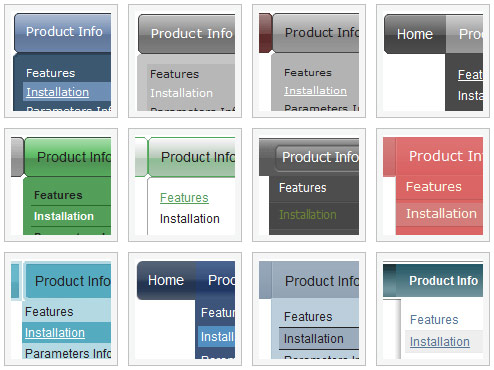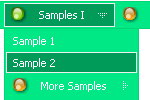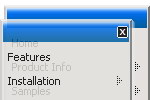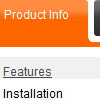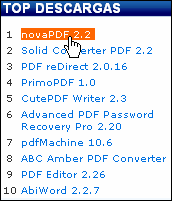Recent Questions
Q: I have the menu installed over a Flash movie. In IE the menu flickers and in Firefox it disappears under Flash movie. Is there a fix for this that allows me to have menu lay pover Flash movie?
A: See more info here:
http://deluxe-menu.com/objects-overlapping-sample.html
> In IE the menu flickers
You can have such effect in IE7. You should click on the flash. Yourmenu will stop flicker.
Q: Would it be possible at some point to introduce more font decoration options to the mouseover variables, I would like to add bold as a mouseover font decoration, but obviously this is not possible at the moment.
A: Unfortunately, Deluxe Menu doesn't have such a feature. You can onlyset it's color. You cannot set the font of menu item bold when selected.
You should addthe following code in your data file:
function changeFont(obj, over)
{
obj.style.fontWeight = over ? 'bold' : 'normal';
obj.style.fontSize = over ? '13px' : '12px'; // You can not use this line
}
var menuItems = [
["<div onMouseOver='changeFont(this, 1)' onMouseOut='changeFont(this, 0)'>Security</div>","", "", "", "", "", "", "", "", ],
["<div onMouseOver='changeFont(this, 1)' onMouseOut='changeFont(this, 0)'>Ease of Access</div>","", "", "", "", "", "", "", "", ],
["|<div onMouseOver='changeFont(this, 1)' onMouseOut='changeFont(this, 0)'>Internet Options</div>","", "", "", "", "", "", "", "", ],
["|<div onMouseOver='changeFont(this, 1)' onMouseOut='changeFont(this, 0)'>Windows Firewall</div>","", "", "", "", "", "", "", "", ],
["<div onMouseOver='changeFont(this, 1)' onMouseOut='changeFont(this, 0)'>Network and Internet</div>","", "", "", "", "", "", "", "", ],
["<div onMouseOver='changeFont(this, 1)' onMouseOut='changeFont(this, 0)'>Hardware</div>","", "", "", "", "", "", "", "", ],
Q: I have spanish characters that are not showing up in my menus correctly.
My array has this:
["|México","#", "", "", , , "7", , ],
buy in the drop downs it appears as M?xico
I read in the FAQ about displaying Norwegian characters
(http://deluxe-menu.com/rq-javascript-menu-drop-down-Norwegian-characters-support.html)
so I tried this:
but that did nothing.
I have the charset on the page set properly and the letters appear properly everyone else, only incorrect in the menus.
A: You should write your Spanish characters in the following way:
["|México","#", "", "", , , "7", , ],
Try that.
Q: Can your javascript menu examples be used when developing and deploying and running a site using Tomcat-Apache and JSP's? Apache's will be the web server.
Do you provide set up instructions for Apache web server?
A: Deluxe Menu is Javascript product. It means that it is executed on a client side, not on a server side.So, whatever server you'll use, your menu will work fine.


